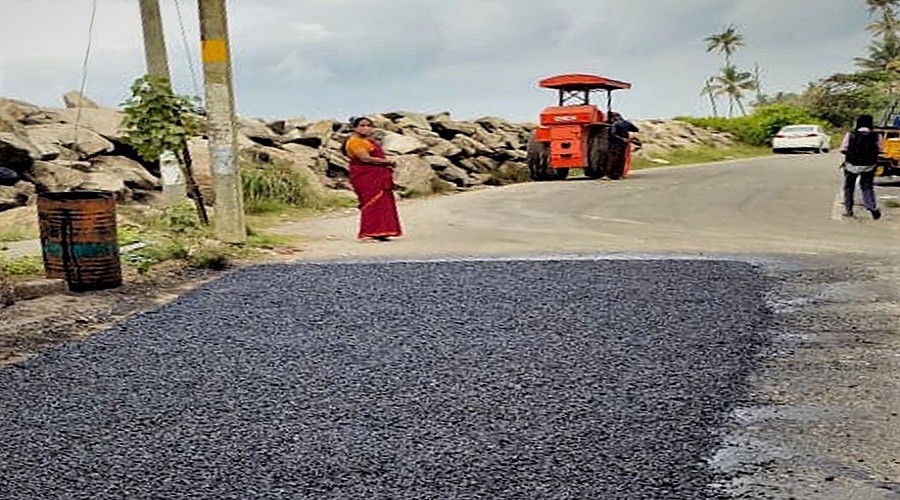A. Harikumar
When the two lane 13-kilometre-long Kollam bypass and the around seven-kilometre-long two lane Alappuzha bypass on NH 66 were opened to traffic in the recent past, Kerala went bonkers over it. Euphoric politicians across the spectrum scrambled to take the credit for completing the road, which they touted as an incredible achievement.
However, they all conveniently forgot the fact that it took around 40 long years for the state to complete work of Alappuzha bypass, after the land was acquired by the revenue department in 1980. Similarly it took almost the same time for Kollam bypass also, which was approved by Central Road Ministry in 1978, to become a reality.
Both projects typify the inordinate delay in construction and its fallout cost escalation, which characterise infrastructure projects in Kerala. It is quite embarrassing for a state to take painstakingly long periods of a few years to complete one kilometre of road, when India has achieved the feat of building 38 kilometre of road in a day in 2021. The union minister of roads Nitin Gadkari says his target is to build 100 k.m of road a day in the coming years. But Kerala, which claims to be the numero uno among Indian states regarding development, can’t even dream such feats.
Fallout of delay
When a road is completed in Kerala decades after schedule, the estimated traffic density on the road and the load factor on the road would have increased several fold nullifying the goals envisioned when the development was planned. The result is even the newly constructed roads do not ease traffic logjams. Currently, when states like Uttar Pradesh build futuristic roads which have common utility ducts which prevent the need for digging up roads for laying cables and other purposes when it is completed, even the best roads of Kerala lack such facilities. Immediately after completion, many roads are excavated for laying cables and pipelines. Different government departments vie each other to establish their rights on roads.
Kerala national highways don’t have even four lanes along a major portion. A hoary story doing rounds on internet is about the response of an interstate truck driver who after having tea at a wayside shop beside NH 66 asked the shopkeeper, how long it would take to reach a national highway. When the shopkeeper told him that he has been driving through national highway, he had the shock of his life. He parked the truck there, and refused to drive thereafter. The driver never thought Kerala’s national highways are dingy two-lane roads with bumper-to-bumper traffic.
Futuristic roads of other states
Roads in other states from extending from Tamil Nadu, down south to Uttar Pradesh in the north are planned with a futuristic vision and have enough space for future expansion without acquisition. For example, take the new six lane Bangalore-Mysore expressway of Karnataka, or UP’s Eastern Peripheral Expressway or the Ganga expressway, which is coming up there; all have enough land for expanding them into eight lanes in future. The six lane highways have 120 metre width whereas in Kerala, the public and the government are doing their level best to limit the proposed widening of national highways from 60-metre to 45 metres.
New expressways like Bangalore-Mysore expressway have separate track for two wheelers and autorickshaws. The recently inaugurated expressways to the pilgrim town of Pandharpur in Maharashtra have well developed pedestrian pathways. But pedestrian pathways beside Kerala roads disappeared as the roads expanded, and Kerala doesn’t cares pedestrians. In cities like Kochi, one could find two wheelers coming through pedestrian walkways on the busy MG road. Shoulders of roads in Kerala’s are encroached by powerful groups in many places and governments rarely show the will power to evict them. Once a road is completed in Kerala, shops come up along the entire stretch, scuttling any future expansion and creating traffic jams.
National highway length
According to a pamphlet of Ministry of Road Transport and Highways, Government of India, the total length of national highways in Kerala, including in-principle national highways is (as on 2018) 2286.5 kms. The length excluding in-principle national highways alone is pointed out to be around 1781 kilometre. The total percentage of national highways in Kerala comes up to just 1.6 percent of the national total.
However the length of national highways in Karnataka and Tamil Nadu, neighbouring states of Kerala, is far high. The total length of national highways in Karnataka including in-principle highways is 13,565 kilometre in 2019, according to ministry of roads and highways. According to other sources excluding in-principle NH, the total length of highways in 7332 kilometres. The total length of national highways in Tamil Nadu including in-principle highways was 7482. 87 kilometres. In 2019. Kerala has miles to go to achieve standards of neighbouring states in road development.
At present Kerala government has embarked on a mission to improve the quality of roads and expand national highways. One of the main aspects of government’s drive is to make contractors responsible for faults of the road. However, it is pointed out that passing the buck without addressing the basic issues won’t make Kerala roads better.


Informative. Nice read…….
കേരളത്തിന്റെ ഭാവി വികസനം ടൂറിസം ആസ്പദിമാക്കി അടിസ്ഥാന വികസനങ്ങൾ മാത്രം നിലനിർത്തി പ്രകൃതി രമണീയമക്കണോ അതോ എല്ലായിടത്തും റോഡുകളും പാലങ്ങളും ബഹുനിലകെട്ടിടങ്ങളും ഉയർത്തി പ്രകൃതി ക്ഷോഭങ്ങൾക്കു ഇരയാകും വിധം ആധുനീക വികസനം നടപ്പിലാക്കുകയാണോ വേണ്ടത്